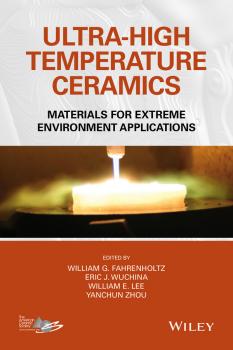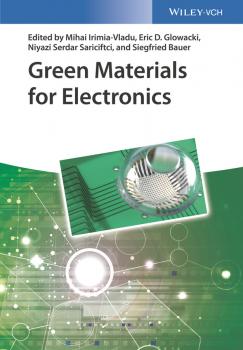ТОП просматриваемых книг сайта:
Зарубежная образовательная литература
Различные книги в жанре Зарубежная образовательная литература, доступные для чтения и скачиванияАннотация
The first comprehensive book to focus on ultra-high temperature ceramic materials in more than 20 years Ultra-High Temperature Ceramics are a family of compounds that display an unusual combination of properties, including extremely high melting temperatures (>3000°C), high hardness, and good chemical stability and strength at high temperatures. Typical UHTC materials are the carbides, nitrides, and borides of transition metals, but the Group IV compounds (Ti, Zr, Hf) plus TaC are generally considered to be the main focus of research due to the superior melting temperatures and stable high-melting temperature oxide that forms in situ. Rather than focusing on the latest scientific results, Ultra-High Temperature Ceramics: Materials for Extreme Environment Applications broadly and critically combines the historical aspects and the state-of-the-art on the processing, densification, properties, and performance of boride and carbide ceramics. In reviewing the historic studies and recent progress in the field, Ultra-High Temperature Ceramics: Materials for Extreme Environment Applications provides: Original reviews of research conducted in the 1960s and 70s Content on electronic structure, synthesis, powder processing, densification, property measurement, and characterization of boride and carbide ceramics. Emphasis on materials for hypersonic aerospace applications such as wing leading edges and propulsion components for vehicles traveling faster than Mach 5 Information on materials used in the extreme environments associated with high speed cutting tools and nuclear power generation Contributions are based on presentations by leading research groups at the conference «Ultra-High Temperature Ceramics: Materials for Extreme Environment Applications II» held May 13-19, 2012 in Hernstein, Austria. Bringing together disparate researchers from academia, government, and industry in a singular forum, the meeting cultivated didactic discussions and efforts between bench researchers, designers and engineers in assaying results in a broader context and moving the technology forward toward near- and long-term use. This book is useful for furnace manufacturers, aerospace manufacturers that may be pursuing hypersonic technology, researchers studying any aspect of boride and carbide ceramics, and practitioners of high-temperature structural ceramics.
Аннотация
Written and edited by leading experts on equine digestive diseases, The Equine Acute Abdomen, Third Editionis the preeminent text on diagnosing and treating acute abdominal diseases in horses, donkeys, and mules. The definitive guide to acute abdominal disorders in equine patients, fully updated and revised to reflect the latest developments in the field Lavishly illustrated with more than 450 color illustrations, photographs, line drawings, and figures A companion website features video clips and images from the book available for download Provides an invaluable resource to equine surgery and internal medicine specialists, researchers, practitioners, and students who deal with colic
Аннотация
Combining the materials science, technological, and device aspects of organic bioelectronics based on green materials, this is the first overview of the emerging concepts involving fabrication techniques for sustainable electronics with low energy and material consumption. With contributions from top-notch editors and authors, in one focus, the book covers a collection of natural materials suited for electronics applications such as paper, silk, melanin, DNA and nucleobases, resins, gums, saccharides, cellulose, gelatine and peptides. In another thrust, the book focuses on device fabrication based on these materials, including processing aspects, and applications such as sensors, signal transducers, transient, implantable and digestible electronics. With its interdisciplinary approach this text will appeal to the chemistry, physics, materials science, and engineering communities.
Аннотация
Offers a comprehensive introduction to the fundamental structures and applications of a wide range of contemporary coding operations This book offers a comprehensive introduction to the fundamental structures and applications of a wide range of contemporary coding operations. This text focuses on the ways to structure information so that its transmission will be in the safest, quickest, and most efficient and error-free manner possible. All coding operations are covered in a single framework, with initial chapters addressing early mathematical models and algorithmic developments which led to the structure of code. After discussing the general foundations of code, chapters proceed to cover individual topics such as notions of compression, cryptography, detection, and correction codes. Both classical coding theories and the most cutting-edge models are addressed, along with helpful exercises of varying complexities to enhance comprehension. Explains how to structure coding information so that its transmission is safe, error-free, efficient, and fast Includes a pseudo-code that readers may implement in their preferential programming language Features descriptive diagrams and illustrations, and almost 150 exercises, with corrections, of varying complexity to enhance comprehension Foundations of Coding: Compression, Encryption, Error-Correction is an invaluable resource for understanding the various ways information is structured for its secure and reliable transmission in the 21st-century world.
Информация о книге
Автор произведения Jean-Guillaume Dumas
Electromagnetic Bandgap (EBG) Structures. Common Mode Filters for High Speed Digital Systems - Bruce Archambeault
Аннотация
An essential guide to the background, design, and application of common-mode filtering structures in modern high-speed differential communication links Written by a team of experts in the field, Electromagnetic Bandgap (EBG) Structures explores the practical electromagnetic bandgap based common mode filters for power integrity applications and covers the theoretical and practical design approaches for common mode filtering in high-speed printed circuit boards, especially for boards in high data-rate systems. The authors describe the classic applications of electromagnetic bandgap (EBG) structures and the phenomena of common mode generation in high speed digital boards. The text also explores the fundamental electromagnetic mechanisms of the functioning of planar EBGs and considers the impact of planar EBGs on the digital signal propagation of single ended and differential interconnects routed on top or between EBGs. The authors examine the concept, design, and modeling of EBG common mode filters in their two forms: on-board and removable. They also provide several comparisons between measurement and electromagnetic simulations that validate the proposed EBG filters' design approach. This important resource: • Presents information on planar EBG based common mode filters for high speed differential digital systems • Provides systematic analysis of the fundamental mechanisms of planar EBG structures • Offers detailed design methodology to create EBG filters without the need for repeated full-wave electromagnetic analysis • Demonstrates techniques for use in practical real-world designs Electromagnetic Bandgap (EBG) Structures: Common Mode Filters for High Speed Digital Systems offers an introduction to the background, design, and application of common-mode filtering structures in modern high-speed differential communication links, a critical issue in high-speed and high-performance systems.
Аннотация
The Magnesium Technology Symposium, the event on which this collection is based, is one of the largest yearly gatherings of magnesium specialists in the world. Papers represent all aspects of the field, ranging from primary production to applications to recycling. Moreover, papers explore everything from basic research findings to industrialization. Magnesium Technology 2016 covers a broad spectrum of current topics, including alloys and their properties; cast products and processing; wrought products and processing; forming, joining, and machining; corrosion and surface finishing; ecology; and structural applications. In addition, there is coverage of new and emerging applications. The collection includes more than 50 papers.
Аннотация
There are only few discoveries and new technologies in physical sciences that have the potential to dramatically alter and revolutionize our electronic world. Topological insulators are one of them. The present book for the first time provides a full overview and in-depth knowledge about this hot topic in materials science and condensed matter physics. Techniques such as angle-resolved photoemission spectrometry (ARPES), advanced solid-state Nuclear Magnetic Resonance (NMR) or scanning-tunnel microscopy (STM) together with key principles of topological insulators such as spin-locked electronic states, the Dirac point, quantum Hall effects and Majorana fermions are illuminated in individual chapters and are described in a clear and logical form. Written by an international team of experts, many of them directly involved in the very first discovery of topological insulators, the book provides the readers with the knowledge they need to understand the electronic behavior of these unique materials. Being more than a reference work, this book is essential for newcomers and advanced researchers working in the field of topological insulators.
Аннотация
Forensic Microbiology focuses on newly emerging areas of microbiology relevant to medicolegal and criminal investigations: postmortem changes, establishing cause of death, estimating postmortem interval, and trace evidence analysis. Recent developments in sequencing technology allow researchers, and potentially practitioners, to examine microbial communities at unprecedented resolution and in multidisciplinary contexts. This detailed study of microbes facilitates the development of new forensic tools that use the structure and function of microbial communities as physical evidence. Chapters cover: Experiment design Data analysis Sample preservation The influence of microbes on results from autopsy, toxicology, and histology Decomposition ecology Trace evidence This diverse, rapidly evolving field of study has the potential to provide high quality microbial evidence which can be replicated across laboratories, providing spatial and temporal evidence which could be crucial in a broad range of investigative contexts. This book is intended as a resource for students, microbiologists, investigators, pathologists, and other forensic science professionals.
Информация о книге
Автор произведения Jeffery Tomberlin K.
Аннотация
The relationship between technicity and scientificity is often overlooked or avoided despite being a determining factor for establishing interdisciplinarity. By focusing on this relationship and highlighting a number of its ramifications, this book sheds light on the hidden or skewed stakes that condition a wide array of scientific projects. The authors present different approaches based on their own professional experience, focusing on the technique–science relationship in domains as diverse as brain mapping, the decipherment of Mycenaean writing and the design process. Each chapter presents varying and often opposing epistemological conclusions to provide the reader with a wide breadth of examples in different fields. Although the scope of this book is far from exhaustive, it serves as a starting point for the necessary and long-overdue clarification of the relationship between these neighboring, yet disjointed, sectors.
Информация о книге
Автор произведения Georges Guille-Escuret
Atomic Layer Deposition. Principles, Characteristics, and Nanotechnology Applications - David Cameron
Аннотация
Since the first edition was published in 2008, Atomic Layer Deposition (ALD) has emerged as a powerful, and sometimes preferred, deposition technology. The new edition of this groundbreaking monograph is the first text to review the subject of ALD comprehensively from a practical perspective. It covers ALD's application to microelectronics (MEMS) and nanotechnology; many important new and emerging applications; thermal processes for ALD growth of nanometer thick films of semiconductors, oxides, metals and nitrides; and the formation of organic and hybrid materials.










